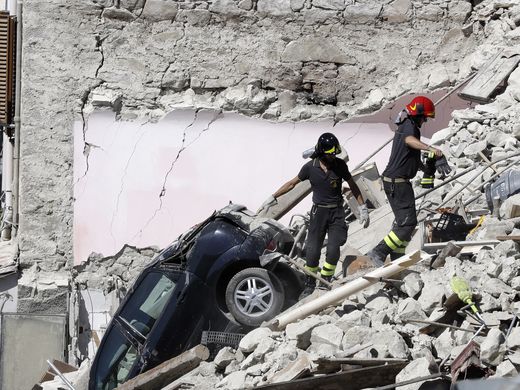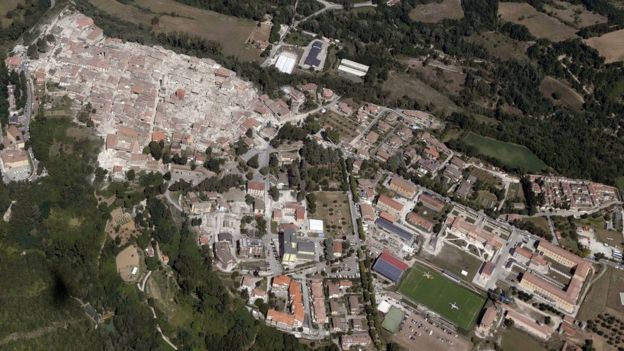There may finally be a silver lining to all the bad news surrounding the earthquake that struck Italy on Wednesday. According to The Art Newspaper, Italy’s state museums and archaeological sites will donate their all their income this Sunday (August 28) to the regions hardest-hit by the earthquake.
As of earlier today, Italy has declared a state of emergency in the regions worst hit after numerous aftershocks following Wednesday’s 6.2 earthquake continue to strike. According to the BBC, the death toll has now risen to 268 and counting, and at least 400 people remain injured. Teams are continuing to search for both the dead and the living in the rubble of several towns, but hope and morale are beginning to fade.

Many of the towns that were hit the hardest by the earthquake and aftershocks are historic. According to the BBC, historic towns are not required to conform to earthquake-safe building regulations for obvious reasons–historic architecture sometimes cannot be seismically retrofitted without damaging the building’s integrity. And with new quake-safe standards, new buildings constructed don’t always necessarily follow them to the letter. The villages worst-hit–Amatrice, Arquata, Accumoli and Pescara del Tronto–are primarily historically-significant, and aren’t heavily populated. However, these towns are popular destinations for summer tourists–which created the worst-possible scenario–buildings that aren’t quake-safe full of people from outside of the area, which leads rescuers unable to make an accurate estimate for the people still missing.
In light of all the destruction, Italy’s historic sites that remain safe have declared that all of their proceeds generated on Sunday, August 28, will go to recovery operations the central regions where the earthquake struck the hardest, according to The Art Newspaper. Culture minister Dario Franceschini urged both Italians and tourists to “go to museums in a sign of solidarity with the populations involved in [Wednesday’s] earthquake.” The movement comes after culture officials met up in Turin to discuss damage, damage control, and strategy. According to The Art Newspaper, the Turin city council issued this statement following Thursday’s meeting:
“In a moment like this, in which the artistic and architectural heritage of the country has been severely hit, it is important to reaffirm the role of culture by making it available to those who are suffering in this terrible tragedy.”
According to The Art Newspaper, as of today, nearly 300 historic buildings have been destroyed or seriously damaged within a twenty-kilometer radius of the earthquake’s epicenter. The number will likely increase as the Carabinieri art squad, organized to assess the damage to historic sites in the worst-hit central regions, continues to survey the areas of Lazio, Umbria, Le March,e and Abruzzo for damage.

While restoring historic buildings damaged by the quake is in everyone’s mind, the ministry of culture stated that restorers will take action “only after the first emergency phase, which must be concerned with saving lives and assisting the affected populations.” That’s why the decision for Italy’s historic sites to donate proceeds to rescue efforts, rather than preservation and restoration efforts, was made immediately.
Italy’s rich cultural heritage makes a natural disaster like this especially difficult to work through. Which makes the ministry of culture’s rapid decision to focus on rescue efforts even more commendable–people first, then preservation.
Read more up-to-the-minute news at the BBC’s website and more art-related news at The Art Newspaper’s website.
What do we do here at the Art Docent Program? Find out here.
Need more art blogs? Check out our past posts here.







